1. Cave Paintings of Dogs (Arabian Peninsula)
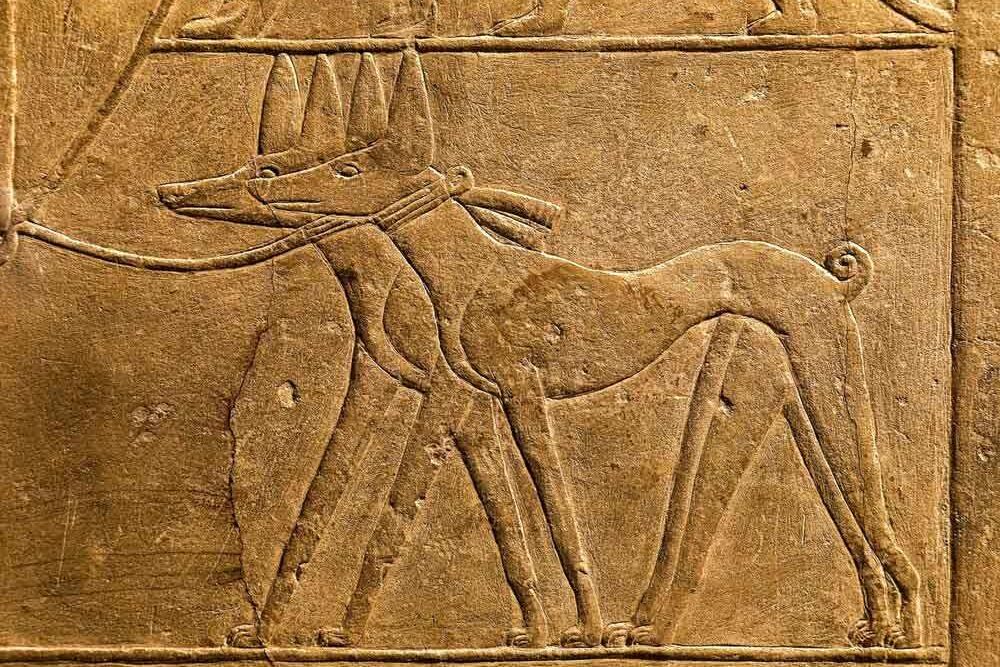
Long before oil paints or marble sculptures, dogs appeared in cave art. In Saudi Arabia, carvings over 8,000 years old show dogs with leashes, possibly the earliest evidence of domestication. These simple but powerful depictions capture how dogs shifted from wild animals to hunting partners. Vets and historians alike see these carvings as proof of dogs’ deep bond with humans, even in the dawn of civilization. It’s a humble yet profound start to their place in art, where loyalty and love began to take form on ancient stone walls.
2. Egyptian Tomb Paintings

In Ancient Egypt, dogs were depicted on tomb walls as guardians and hunting companions. Breeds resembling Greyhounds and Basenjis appear beside pharaohs, often painted with collars and sleek fur. Egyptians associated dogs with Anubis, the jackal-headed god of the afterlife, and saw them as protectors on the journey to eternity. These artworks reveal not only the role of dogs in daily life but also their spiritual importance, immortalizing them as divine guides in art and religion, watching faithfully over both the living and the dead.
3. Roman Mosaics of Pompeii
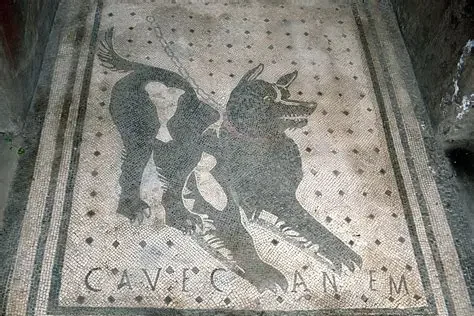
One of the most famous Roman mosaics, found in Pompeii, features a black dog with the words “Cave Canem” meaning “Beware of the Dog.” It is an early version of the modern sign, immortalized in tile and history. Romans used mosaics to decorate villas, often featuring their beloved pets as symbols of loyalty and protection. These detailed designs spoke of companionship and domestic pride. Centuries later, these mosaics remind us that even in ancient times, people proudly showcased their dogs in the heart of their homes.
4. Jan van Eyck’s Arnolfini Portrait (1434)
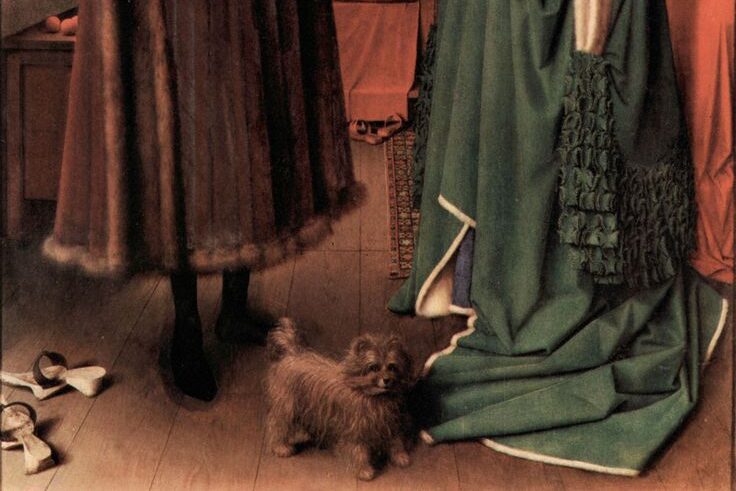
In this iconic Renaissance painting, a small dog stands at the couple’s feet, its fur painted with delicate precision. Scholars believe it symbolizes loyalty, fidelity, and enduring love in marriage. The dog’s presence adds warmth to the solemn portrait, grounding its grandeur in affection and trust. Van Eyck’s choice reflects how deeply dogs were tied to human relationships, becoming symbols of partnership and honesty. This small creature, nestled quietly between figures of wealth and formality, reminds us that love’s truest witness is often the one who simply stays.
5. Titian’s Venus of Urbino (1538)
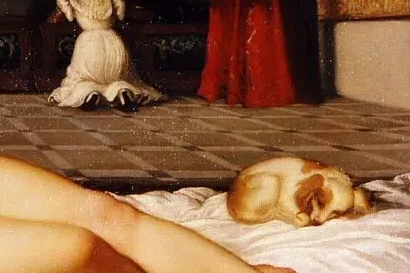
At the foot of Titian’s reclining Venus lies a small lapdog, painted with striking attention to detail. The dog symbolizes marital fidelity and domestic harmony, echoing Renaissance ideals of trust and devotion. Its peaceful rest mirrors Venus’s serene composure, linking sensuality to loyalty and companionship. In this scene of beauty and softness, the dog’s presence gives balance and meaning. Through it, Titian shows that love, in its truest form, is not only passion but the quiet comfort of being trusted and loved completely.
6. Goya’s The Dog (1819–1823)
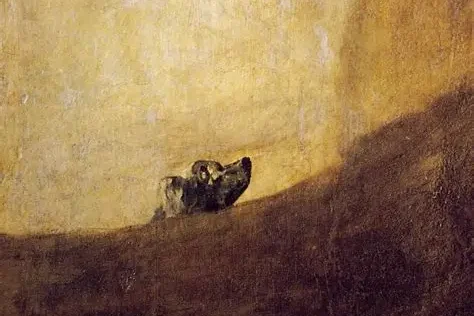
One of the most haunting dog depictions in art is Francisco Goya’s mysterious painting, The Dog. It shows a small dog’s head peering out from beneath a vast, empty space, as if sinking into solitude. Some believe it represents despair, while others see loyalty in hardship. Painted late in Goya’s life, its simplicity feels deeply human. Without grandeur or context, it evokes emotion through isolation. The work reminds us that dogs, like people, can embody loneliness and hope at once, standing as symbols of endurance amid uncertainty.
7. Edwin Landseer’s The Old Shepherd’s Chief Mourner (1837)

This Victorian masterpiece captures the quiet sorrow of a dog resting its head on its owner’s coffin. Landseer was known for his emotional depictions of animals, and here he shows grief in its purest form. The painting moved audiences across Britain, embodying the idea of a dog’s loyalty beyond death. It reflects the Victorian belief in faithful devotion, a love so strong it survives loss. The dog’s downcast eyes and stillness make it feel heartbreakingly real, a silent testimony to love that never fades.
8. Sir Joshua Reynolds’ Portraits with Dogs
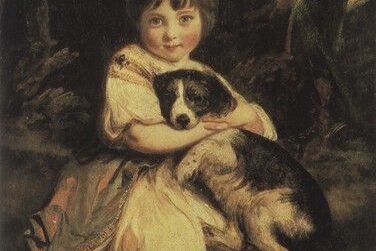
Sir Joshua Reynolds often included dogs in his portraits of nobles and families, using them to symbolize loyalty and sincerity. The dogs in his works, from playful spaniels to calm hounds, softened formal poses and added warmth to grandeur. In these paintings, dogs became emotional anchors, balancing human pride with affection. Reynolds’s choice showed how dogs reflected character and steadiness, traits valued in 18th-century society. His art reminded viewers that true nobility was not only in titles, but in the company of a loyal friend.
9. Thomas Gainsborough’s The Painter’s Daughters with a Cat and a Dog (1760s)
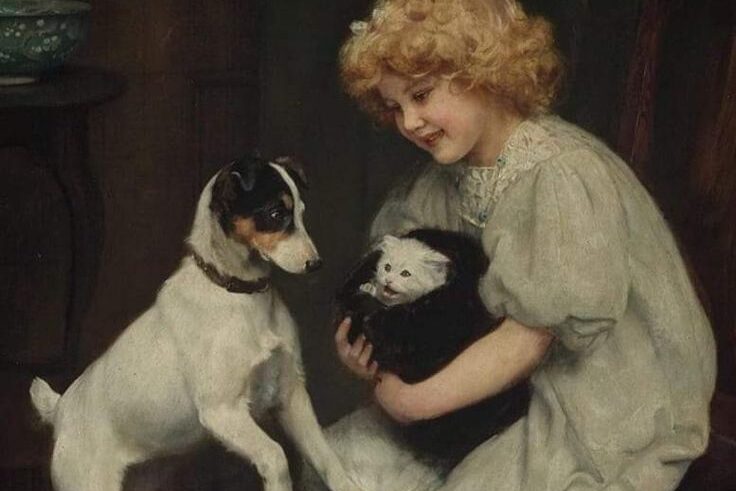
This tender portrait by Thomas Gainsborough shows his daughters playing with a dog and a cat, their innocence captured in soft brushstrokes. The dog, patient and affectionate, represents loyalty and comfort within family life. It gazes upward lovingly, embodying protection and purity. The cat adds mischief and contrast, but the dog grounds the scene in calm. Gainsborough’s painting feels intimate, personal, and genuine. It shows how dogs often serve as the heart of a home, silently nurturing warmth, joy, and togetherness through life’s quietest moments.
10. William Hogarth and His Pug, Trump
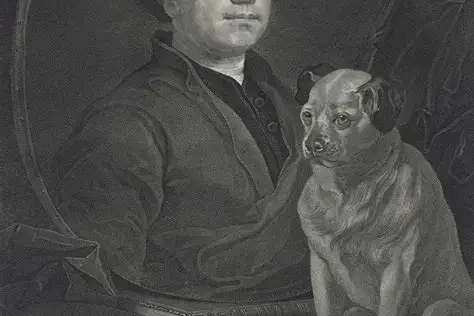
William Hogarth, famous for his satirical art, often painted himself beside his pug, Trump. The little dog became a symbol of loyalty and humor, mirroring the artist’s personality. Hogarth’s self-portraits with Trump blended art and affection, showing a rare glimpse of tenderness beneath his wit. The pug, with its stout form and steady eyes, embodied the companionship that kept the artist grounded amid social chaos. Together, they reflected a truth that never changes: even the sharpest minds are softened by the love of a loyal pet.
11. Rosa Bonheur’s Animal Studies
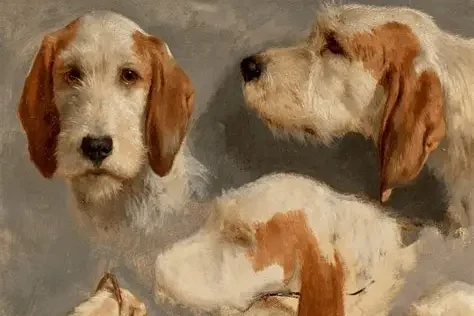
Rosa Bonheur was a French artist who gave animals the dignity they deserved. Her dog paintings, from working herders to gentle companions, captured emotion and spirit with precision. Unlike many artists of her time, Bonheur didn’t idealize her subjects; she portrayed them as living beings with purpose. Each brushstroke conveyed affection and realism. Her work showed that dogs weren’t ornaments or symbols, but individuals with courage and heart. Through her art, Bonheur celebrated their nobility and reminded the world that empathy creates true beauty.
12. Queen Victoria’s Portraits with Dogs
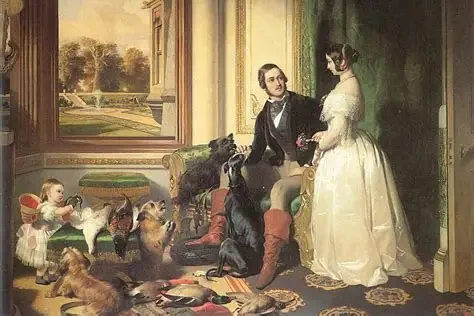
Queen Victoria’s portraits often featured her beloved dogs, reflecting the affection she felt for her pets. From her Collie, Noble, to her Skye Terrier, Islay, her paintings revealed a softer, more personal side of royalty. Her fondness for dogs helped popularize several breeds throughout Britain and beyond. Artists captured her surrounded by loyal companions, transforming dogs into symbols of domestic warmth and virtue. These portraits bridged monarchy and everyday love, proving that compassion, whether royal or common, finds its truest expression in faithful friendship.
13. Pablo Picasso’s Dachshund Lump (1950s)

Picasso’s small Dachshund, Lump, became both muse and friend. The artist adored him, sketching and painting his likeness with quick, tender lines. Lump’s playful energy often softened Picasso’s bold modernist style, revealing his gentler side. Their relationship inspired works that felt spontaneous and sincere. The bond between artist and pet shows how creativity can spring from companionship. In Lump’s eyes, Picasso found joy and simplicity, a reminder that inspiration doesn’t always come from grandeur, but from the warmth curled up beside you.
14. Cassius Marcellus Coolidge’s Dogs Playing Poker (1894–1910)
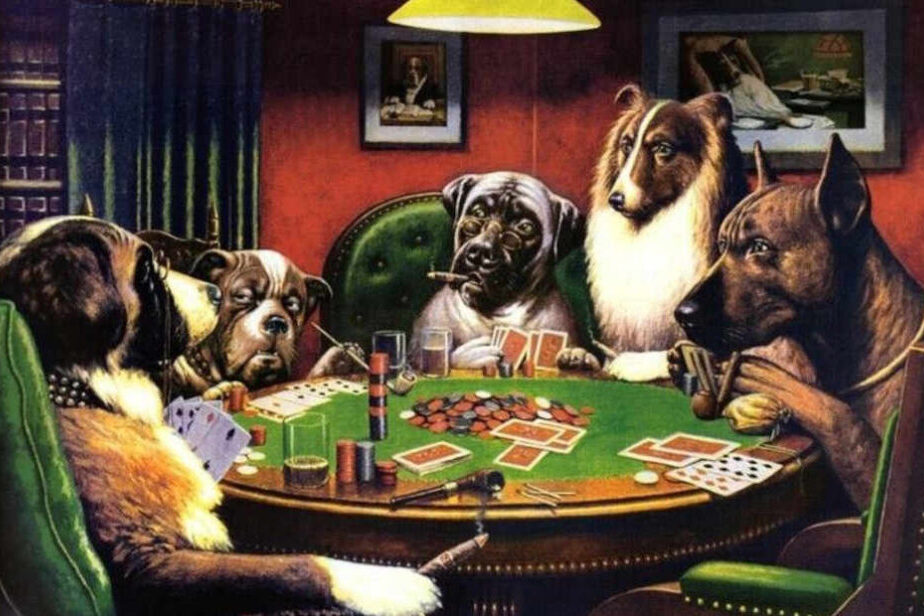
Cassius Coolidge’s series of dogs playing poker may be lighthearted, but it has become one of the most recognizable images in American art. His anthropomorphic dogs, sitting around card tables and puffing cigars, reflect humor and human behavior. Though critics once dismissed the paintings as novelty, they captured something timeless about companionship and trust. These poker-faced dogs remind us of evenings shared with friends, laughter over strategy, and unspoken loyalty at the table. Coolidge’s playful vision turned man’s best friend into a cultural icon.
15. Jeff Koons’ Balloon Dog (1990s)
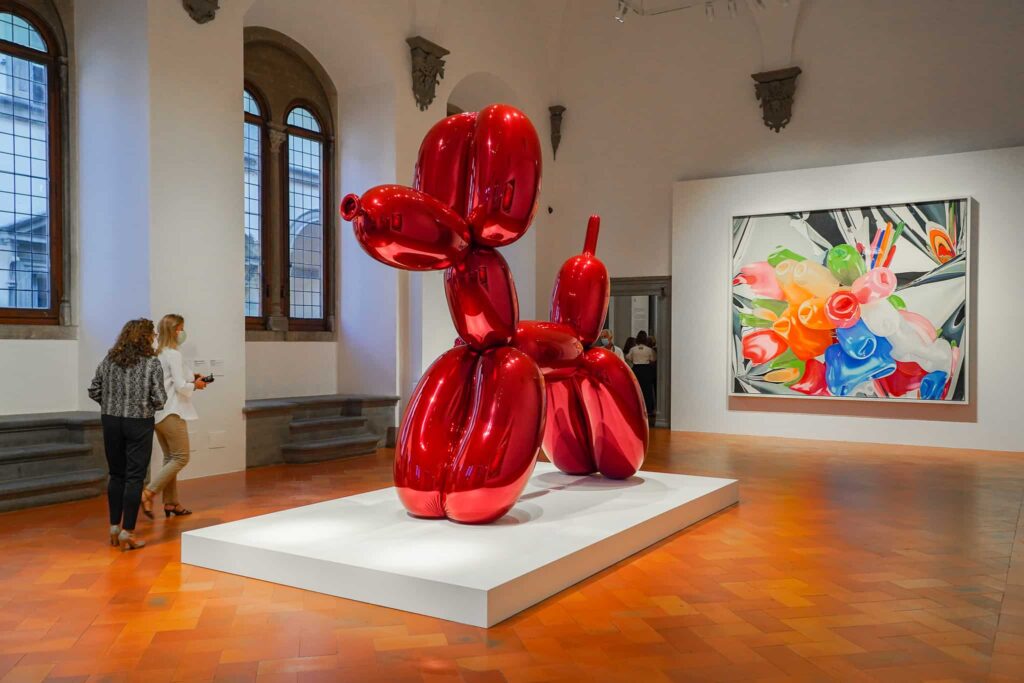
Jeff Koons’ Balloon Dog sculptures reimagined the simple joy of childhood in gleaming metallic form. Towering and reflective, these pieces turn an ordinary balloon animal into monumental art. The dog represents innocence, playfulness, and wonder, reminding viewers of simple happiness found in familiar shapes. Koons described the sculpture as a celebration of optimism and delight. It connects high art with everyday joy, proving that even the most modern creations can carry the timeless warmth of companionship, curiosity, and the pure cheer dogs bring.
16. Keith Haring’s Barking Dogs (1980s)

Keith Haring’s barking dogs became powerful symbols of energy and communication in his street art. With bold lines and bright color, his figures radiated movement and rhythm. The barking dog represented expression and voice, breaking boundaries between art and activism. It embodied rebellion, joy, and alertness, qualities often mirrored in real dogs. Haring’s simplified style captured the essence of companionship without detail, making the dog universal. Even today, his barking dogs speak to everyone who believes loyalty and energy can still inspire change.
17. Yoshitomo Nara’s Cartoon Dogs
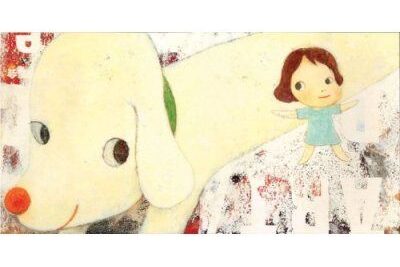
Yoshitomo Nara’s cartoon-like dogs appear sweet at first glance but often hold deeper emotion. Their big eyes and simple lines express innocence mixed with melancholy. Frequently painted beside children, Nara’s dogs act as protectors, companions, or symbols of vulnerability. They capture both comfort and loneliness, showing how dogs can embody fragile human feelings. His playful yet haunting style resonates with modern viewers who see their own emotions mirrored in these small, gentle faces. Through them, Nara redefines connection in today’s fast, distant world.
18. Banksy’s Street Dogs

Banksy’s dogs roam the walls of cities, painted as both companions and critics of society. In one mural, a guard dog strains at a leash, symbolizing control, while another chases a bone attached to a drone, exposing greed and obedience. These dogs are powerful metaphors, part rebellion and part reflection. Through them, Banksy captures the contradictions of loyalty and freedom in modern life. From ancient carvings to street walls, dogs remain eternal in art, their spirit painting our humanity with love and truth.
This story Dogs in Art: 18 Famous Works That Immortalized Man’s Best Friend was first published on Daily FETCH


